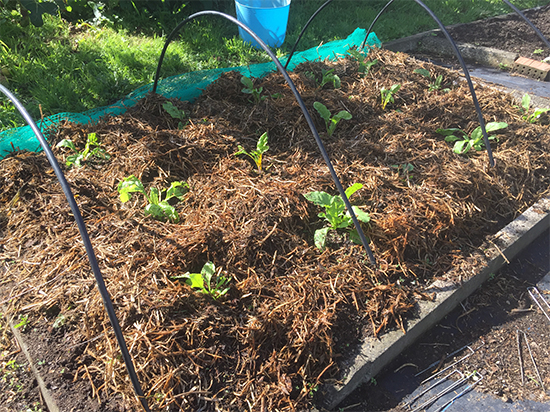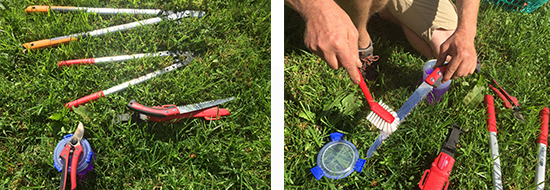With Daylight Saving over this coming weekend, hopefully you’ll be appreciating a bit more light in the mornings! It’s Full Moon and ideally you want to be focussing on root crops.
Fabulous fennel
This week we’re planting Florence fennel, a vegetable that’s becoming more popular every year. We think that’s because it’s easy to grow, and great raw in a winter slaw or baked as a roast vegetable.

Fennel prefers growing in the cooler weather. There are summer and winter varieties, so make sure you choose the right type for the season.
Fennel has a long tap root, so it needs deep friable soil. The area we’re using was the summer cucumber bed where we used a lot of straw as mulch. This has now partially broken down, but we’re going to scrape what’s left off the surface, dig a trench, and put it back in the trench, as it’s a great form of carbon. We also add some compost, then cover it all back over with the existing soil. This raises the soil level, creates a perfect planting medium for the fennel and makes it more free-draining in the wetter months to come.

Successive planting
The beetroot we planted and sowed a month ago is coming along nicely.

We’ve got room in the bed we planted the fennel in though, so I’m going to plant some more beetroot. Successive planting of a dozen plants a month gives us a good supply of beetroot year-round.
All root crops do best when there’s phosphorus added to the soil. We’re using blood and bone as our phosphorus (P) source which usually has an N:P:K of 6:5:0 (this one is 10:4:0.2). The brand we’re using also has powdered seaweed which adds important trace elements.

We didn’t get all the leftover straw into the root crop bed, so the rest goes around the silverbeet and spinach we planted two weeks ago. These guys are growing nicely. The straw will help protect the soil from compaction that comes with heavy rain, keep it warmer over winter and hopefully help keep weeds from germinating.

Pruning stone fruit trees
Next week, during the last phase of the moon, will be a great time to prune summer stone fruit. Choose a clear day with a slight wind. Remember to sterilise your tools in methylated spirits.

Plums especially need yearly pruning for the first 5 or so years of their life. It may seem a bit daunting knowing where to start, but look at this before and after for some inspiration.

Every plum tree seems to grow differently but the basic rules are the same. For the home gardener, it’s best to prune to a vase shape with 4-5 leaders. Removing the branches that grow into the tree will help open it up. This way the tree gets more light and air movement which helps keep it healthy. Remove any branches that have cicada damage and take care not to damage fruiting spurs.

Having opened the tree up on the inside, now prune each branch to the same height. This will help with fruit production the next year. In spring, the sap rises to the highest point in the tree. If all branches are the same height, the energy or sap will be evenly distributed around the tree.

Finally we do a tidy up round the trunk – this helps with access for picking and clears the trunk for mowing.

If you have a success or something special you’re growing that you’d like to share on our blog, please feel free to send it to us at info@organicediblegarden.co.nz
From Rob, Jan and the Team at OEG!
Website designed by www.thecornerstorecollective.com
Developed by Richard Hpa
3 Responses
What blood n bone do you use please
sorry I see it further down in these posts…I have not seen this one before…who stocks it please
Hi Lyn Kings Plant Barn do and I imagine Palmers Garden Centres will too.
It’s possible we might stock it soon too.
All the best 🙂